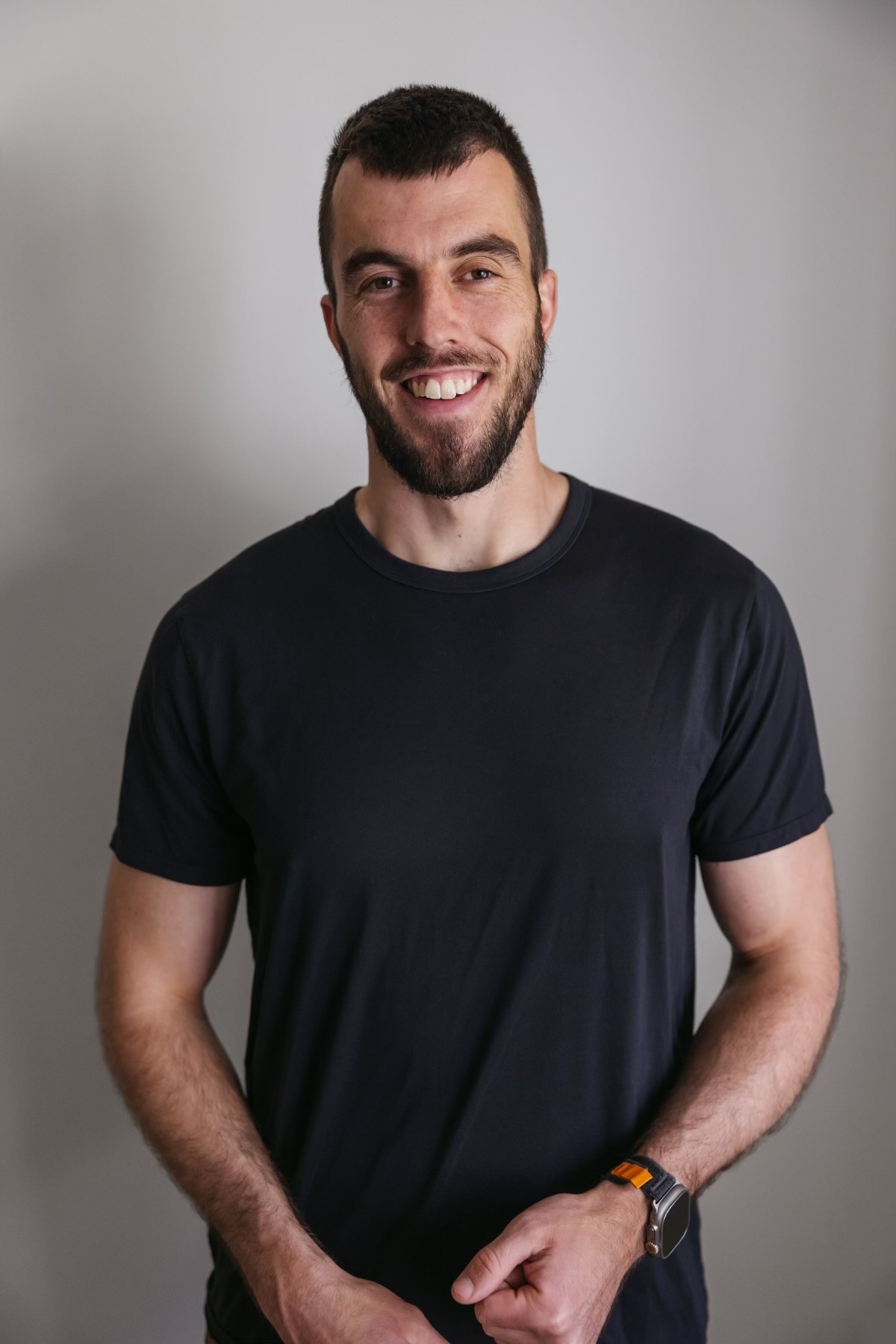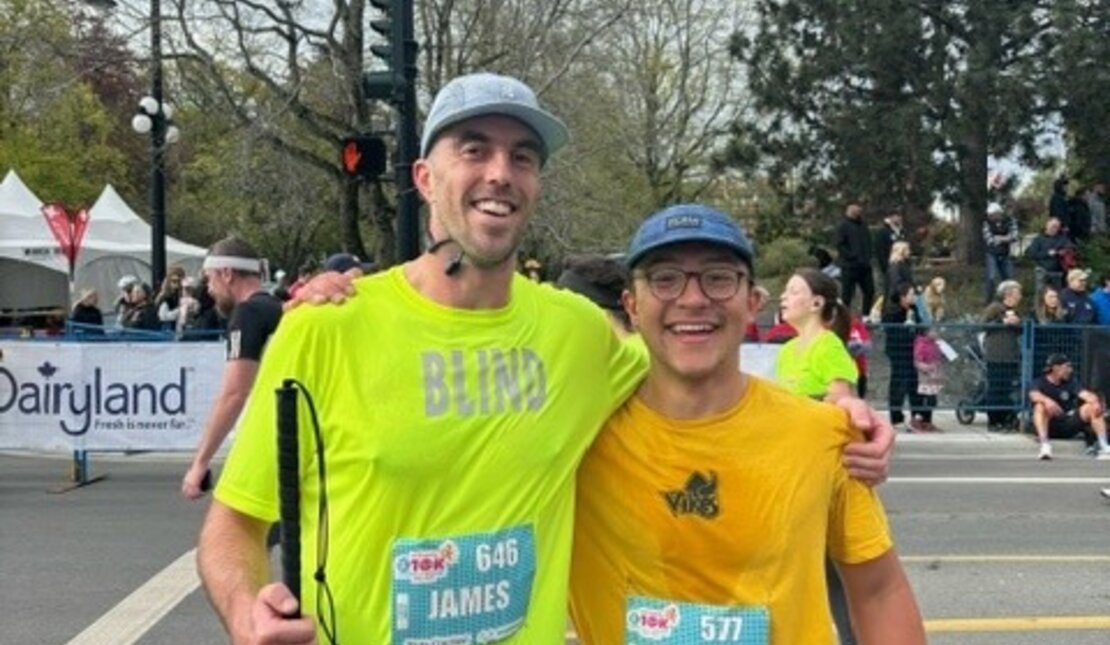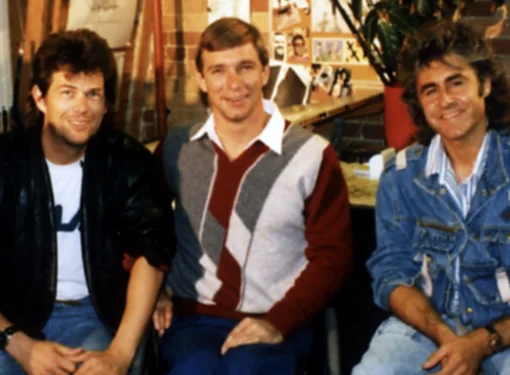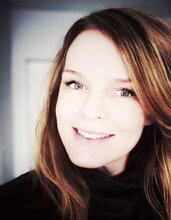Finding Light in a World Gone Dark
It was a day like any other. James Kwinecki, then 21, was going about his life, his future still wide open, when the world around him began to blur. The edges of his vision grew fuzzy, colours started to dull, and within a few short months, the clear, bright world he had always known faded to darkness. The diagnosis: Leber hereditary optic neuropathy, a rare genetic disorder that strips away central vision, leaving those affected legally blind.
For James, life took a sharp turn into the complete unknown.
Before his sight loss, James was active. Growing up, he spent countless hours playing basketball, football, and other sports. He loved the satisfaction of movement. But suddenly, the games and activities he knew wereno longer accessible. The independence that defined him vanished, and he felt like he was left to navigate a world that was no longer his.
“When I lost my vision, I immediately was excluded from playing and moving – something that I took for granted my whole life. Just being able to pick up a basketball and play with friends on any random day. That was gone,” recalled James.
A Passion for Moving
James could have given up. But instead, he turned to the internet, seeking out community and support through Facebook groups for others with vision loss. It was there that he found a new world of adaptive sports and para sports. "I got to know some people from the Greater Toronto Area who were into blind sports," said James. "One of them introduced me to blind baseball, and that was my true introduction to adaptive sports."
Blind baseball offered a way to reconnect with his love of sports, and more importantly, it gave him a sense of community. It was a small but significant step toward rebuilding his life. As James immersed himself in the world of adaptive sports, he discovered rowing. Rowing, a sport that demands physical strength and mental resilience, became a big part of his new life. "I was already familiar with indoor rowing machines from the gym," said James. “Being out on the water was completely different. It was humbling at first, but I was in the right place at the right time."
That "right place" was near Brock University in St. Catharines, Ontario, where Rowing Canada was forging partnerships with major university hubs across the country. Despite not being a student at the time, James was welcomed into the varsity winter training program. He began working out six days a week with the men’s rowing team, pushing his limits and discovering new capabilities within himself.
Two years after losing his vision, James made the decision to go back to school. He enrolled at Brock University, where he studied sociology and social justice, subjects that aligned with his growing passion for accessibility and advocacy. "I was still learning to use assistive technology, learning how to navigate the world without sight," he said. "It was challenging, but it fueled my desire to make spaces more accessible for others."
James’ research eventually led him to the Rick Hansen Foundation (RHF). In particular, it was the RHF Accessibility Certification program that piqued his interest. He wrote about his experiences navigating university in his new city, Victoria, B.C., pinpointing areas of campus life that could benefit from accessibility improvements.
James’ paper wasn’t just an expression of frustration; it was a call to action. He highlighted the need for simple yet impactful changes, like implementing accessible wayfinding technology on campus. "In theory, these are easy things to do, especially with the technology we have today," he says. "But the reality is that making spaces truly accessible requires commitment, understanding, and resources."

Now 29, James joined RHF’s Youth Leadership Committee to connect with other young people who share their experiences with accessibility and disability inclusion. "Being part of this committee has been incredibly rewarding," said James. "It’s a space where we can share our stories, exchange ideas, and advocate for a more inclusive world."
Running, another passion that James discovered after moving on from rowing, gives him a sense of autonomy that is often hard to come by as a person with sight loss. "Running is something I can do on my own, even if it’s just in a safe area like a parking lot loop or an outdoor track," he says. "It gives me freedom and keeps me connected to the physical world."
A New Path Forward
James’ drive to make the world more accessible for the 1 in 4 Canadians with a disability burns bright. He listed some of the accessibility improvements that would benefit those like him with sight loss from audible pedestrian signals at every major intersection to wide sidewalks with no obstacles in the path of travel.
"Losing my vision was devastating," said James, "but it opened up a new path for me. I’ve found purpose in advocating for accessibility, in pushing for a world where everyone, regardless of ability, can participate fully and equally. We all want to participate, and we all want to be out in the world, enjoying life. And with the right support and the right changes, we can make that possible for everyone."
The lack of audible pedestrian signals at intersections and obstacles placed in the path of travel are just two of the many barriers in our communities that prevent so many Canadians from participating in daily life. Your gift to the Rick Hansen Foundation will help create a world where everyone can be included. Donate today.






